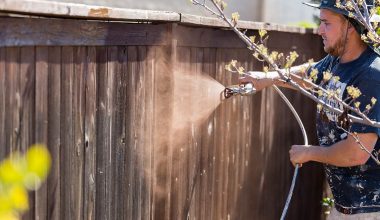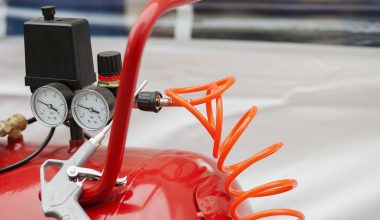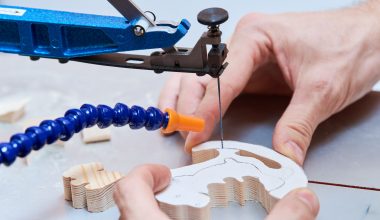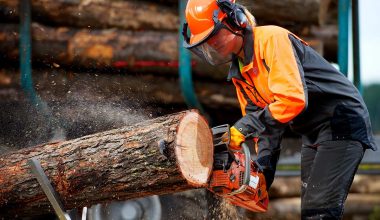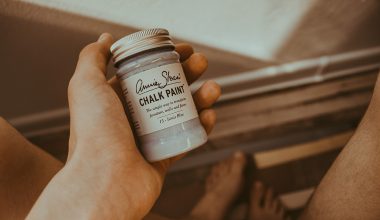The Drill Press: A Quick Introduction
When it comes to precision drilling, a drill press is a critical addition to any workshop. These machines will enable you to secure your workpiece and drill accurate holes in a wide range of materials.
Some believe that this category has missed out on some of the innovation which has occurred in cordless tools. But there have been some subtle leaps forward, and these do mean some machines are better than others.
In this review, we’ll break down some of the top performers in each category. We’ll look at workhorse shop tools and high precision machines all the way through to cost-effective DIY units. The goals are to help you assess what features are important and find the perfect drill press for you.
What To Consider When Buying A Drill Press
Drill presses come in all shapes and sizes, and some are better for performing specific tasks than others. You should spend some time thinking about what you’ll be drilling most often, your budget, and your workshop. Plus a few other important features before you purchase.
Below we’ll discuss some of the main features you’ll likely need to consider when purchasing your drill press.
Machine size
This almost goes without saying, but if you have a lot of space, or anticipate drilling larger objects, a floor standing drill would be a good choice. These larger machines stand freely on their own base, allowing you to keep work benches clear for other projects.
Bench top drills, on the other hand, are more compact. Some people find it easier to use when drilling small workpieces. If you can fit one into your workshop, we generally prefer a floor standing machine. This is because of the added flexibility a drill press gives you. But if you are working in a small shop or on small precision workpieces, a bench top drill might be more appropriate.
Drill Speeds
Drill speeds are also critical to selecting the right drill press for your needs. High speeds (1000-3000RPM) are appropriate for smaller drill bits in most materials, including metal. But, as you start to drill larger holes (1/2” up) in harder metals, you’ll need to drop your drill speed down. You must also begin lubricating the drill to prevent overheating. Lower speeds are also necessary when using specialist drill bits like a Forstner bit.
Unless you are equipping a production line and you will only be doing one type of drilling. We strongly recommend you look for a drill press equipped with the broadest range of drill speeds possible. This will keep your options open for the future when investing in a tool like this.
Motor Power
Motor power is in many ways closely linked to drilling speeds. In that, the drills capable of the lower speeds are typically equipped with more powerful and torquey motors.
Still, like drill speeds, it’s worth purchasing the most powerful motor your budget will allow. Therefore you know you’ll adequate power on tap for any project.
Tilt And Workpiece Orientation
One of the main reasons for using a drill press is that it enables you to properly secure your workpiece for ultra-precise drilling. For smaller objects, this normally isn’t hard using a combination of a drilling vice and clamp. But things get more complex as you start drilling larger objects which might not fit into drill vices.
This is where the tilting work table comes in. It allows you to clamp the workpiece to the table and tilt it to your preference. The best machines even include angle gradations to help you measure the correct drilling angle.
You can add further complexity with the ability to roll the work table towards you as you can with the Delta 18-900L, or rotate the drill head itself with a radial drill press like the Grizzly.
As with so many of these considerations, here at Workshopedia we recommend considering how your use of the tool may or may not evolve over time, and we suggest you build in additional flexibility to help you get the best use out of the your investment in a drill press.
Lasers
Ah, the laser! These are a fantastic innovation to come out in the last 10 years, and really do make life easier. Without one, you’ll find it quite tricky to correctly orient your drill while being sure of complete accuracy. The trouble is the workpiece can often move as you secure it to the work table, or adjust the table height, and this means you’ll find yourself checking and rechecking to ensure accuracy. The traditional solution was to use a centerfinder.
With a laser, however, you don’t need to move the drill table up and down to check the drill’s entry position, and you can secure the piece while continuously checking for the correct alignment of the drill.
We always recommend you look for the best basic features of the drill press above all else – speeds, power, accuracy, etc – but if you can find a drill with a laser it certainly helps.
Drill Chucks
Some drills in this review have larger chucks than others as standard, others just have the ability to take larger chucks later as an additional accessory. This is really a question of what you’ll be drilling and how that may or may not change in the future. Larger chucks are obviously for larger drill bits and larger holes, and won’t be as accurate for small drill bits.
We think the key consideration is really to just ask yourself if you’re working on large or small workpieces and go from there.
Depth Gauges & Stops
Surprisingly simple, but some depth gauges and stops are definitely better than others. If you’re working in a high precision environment, then a good gradated depth gauge and drill stop is essential. In a setting where precision is less critical, a simple gauge is probably better than the simplest solution which is the basic rotary stop.
When all else fails, the traditional solution is to measure your drill bit and wrap some tape around it to ensure the correct drilling depth.
Sanding Capabilities
You can fit a sanding attachment to any drill press and use it for light sanding work. For heavier sanding applications, an oscillating drill chuck like that found on the Shop Fox is certainly a better choice.
In commercial settings, this is likely less of a concern because you’ll probably have a sander already. But for DIY users or users who do anticipate some sanding, having additional degrees of freedom to the work table will also help you sand safely and effectively.
Certifications
Finally, if you are using your machine in a commercial environment, it’s important that it’s correctly certified. Exact rules vary, but it’s safe to assume that machines aimed at the residential and DIY market will not be adequately certified for most commercial settings. While commercial machines are more expensive, like any tool a drill press is an investment in your business, and it’s better to get a quality tool that won’t delay your time or production with breakages.
Top 10 Drill Presses in 2021
Best Overall
1. WEN 4214
Standout Features
⤍ Laser marker for accurate drilling
⤍ Variable speed from 580-3200 RPM without belt changes
⤍ Adjustable work table bevel
⤍ Digital speed readout
⤍ Roller feeder on work table
Our Rating
Check Price
Our Take
Moving a little higher up the WEN range, we have the 4214 laser drill press. This machine is aimed at the mid-level market and incorporates a number of great features to make your drilling easier and more accurate.
First off, unlike other drills in this review, you can change the speed of this machine by turning the nob, rather than manually changing the belt position, which is a huge plus. Powered by a 3.2amp motor, there is plenty of horsepower on tap for most applications, and will serve you well drilling almost all the materials you come across. Sure, you might not be able to run a 1” drill bit through steel on the first pass, but you could work your way up in ¼” increments without any issues.
Taking a look through the other elements of this drill press, you’ve got a laser to help you align your drill, which is a feature we can’t recommend enough. Rather than having to waste a ton of time lining up your workpiece, you can quickly see where the drill is pointing using the laser and get the workpiece secured.
The solid cast iron worktable features a handy bevel for drilling at an angle, and a depth gauge is equipped as standard. This is an excelled mid-level drill for most home workshops and unless you’ve got a hugely demanding application you won’t go wrong with this machine.
Best Value
2. WEN 4208
Standout Features
⤍ 5-speed drill press suitable for most uses
⤍ Sturdy cast work table
⤍ Drill depth gauge
⤍ Adjustable work table bevel
⤍ Great value for money
Our Rating
Check Price
Our Take
If you’re looking for a solid, economical, workhorse of a bench drill, then the WEN 4208 could be just the ticket. While this machine does not incorporate some of the bells and whistles you might find on more expensive machines, it’s a solid performer that will be perfectly adequate for the vast majority home DIY use cases.
Starting with the key functions – the drilling – this unit has 5 speeds, ranging from 740 to 3140 RPM. That’ll be fine for wood, plastic, and soft metals, although if you are regularly drilling hard metals with large drill bits you’ll be needing to look for slower speeds in the 300rpm range.
Taking a look across some of the other buying points, this drill press is sturdy and well proportioned. It comes equipped with a 1/2” chuck, features a chuck key holder, and a simple drill depth limiter. Another important feature of this drill is the beveling worktable so that you can drill your workpiece at an angle. That’s a nice feature you won’t often find on an economic drill press.
All in all, this is a great little performer at a very reasonable price point and will be a great fit for home users looking for a solid entry-level drill press.
Best Performance
3. Jet JDP-17
Standout Features
⤍ 16 speeds from 210-3500RPM
⤍ Laser aligner and LED work light
⤍ Beautifully machined work table and quick speed changing
⤍ 5” Drill movement per handle rotation
⤍ CSA certified
Our Rating
Check Price
Our Take
The JET JPD-17 is an absolute work of art, and all we can say is welcome to drilling nirvana! This machine features 16 drill speeds, from 210 to 3500 RPM, covering all eventualities with exceptional accuracy. Let’s dive right into the features.
First up, you’ve got a powerful laser to help you align your workpiece correctly in the drill press, along with a LED to help light the workpiece nicely. Powering on the drill is done via a sturdy and very safe paddle switch, and the drill moves a full 5” for every rotation of the press arm. That’ll make working your way through big workpieces and deep holes exceptionally easy.
The construction is right up to the level we’d expect from a solid tool manufacturer like JET, and the worktable is beautifully machined. You can really appreciate the design and experience that went into this machine – from the MDF table insert to the lip on the front of the worktable for securing the workpiece with a clamp.
If you’re looking for the best drill press out there, you can look no further – the JDP-17 is the machine.
4. JET J-2530
Standout Features
⤍ High-quality drill from leading manufacturer
⤍ 16 speeds 200-3360 RPM
⤍ Powerful 3/4hp motor
⤍ Suited to precision drilling
⤍ Great value for high level drill
Our Rating
Check Price
Our Take
Another very solid machine from JET, the J-2530 is a lot of drill for the money. Featuring 16 drill speeds from 200 to 3360 RPM, this machine actually has a slightly larger range than the JPD-17. Powered by a whopping ¾ hp motor, this machine has got plenty of power on tap for all your needs.
Featuring a very sturdy cast iron head and ground steel column, this machine is clearly built to last. The sturdy table offers 45 degrees of tilt to allow off-axis drilling, and the sturdy base helps to keep the machine stable.
This machine is very well suited to precision drilling, with a slightly smaller stroke and wider speed range than its compatriot the JDP-17. In our opinion, this might be a better choice in a metalworking shop or any other setting where you find yourself drilling infrequently to high precision.
5. Delta 18-900L 18-Inch Laser Drill Press
Standout Features
⤍ Massive 170-3000RPM speed range across 16 settings
⤍ Work table with bevel and tilt adjustments
⤍ Laser alignment
⤍ 3/4hp motor
⤍ Work table t-slots for easy clamping
Our Rating
Check Price
Our Take
Designed primarily for woodworking applications, Delta’s 18-900L is an exceptional drill, and without a doubt the best drill in the review for woodworking applications. Packed with features, this machine creates an unrivaled opportunity to do things you previously didn’t think possible.
The work table on this press both bevels and tilts, allowing for complex compound drilling that would have previously required a jig set up. Alignment is taken care of using a laser, and the worktable is very large to accommodate big workpieces. The quill features a 6” stroke, the largest in this review, making it ideal for drilling deep holes into complex objects.
From a power perspective, the 3/4hp motor will produce speeds of 170-3000RPM, the widest in the review, across 16 drill speeds. Gear changes are made easy by a self-tensioning belt system, which buyers looking to upgrade from cheaper drill presses will certainly appreciate.
Building on a wealth of experience, Delta really has produced an exceptional drill in the 18-900L – and although by no means a cheap piece of equipment, you won’t be disappointed about a performance standpoint.
6. BILT HARD TL-DP1012-B
Standout Features
⤍ 12 Speed drill press 300-2900 RPM
⤍ Sturdy cast iron work table
⤍ Titling work table
⤍ 5/8” drill chuck
⤍ Affordable price point
Our Rating
Check Price
Our Take
The BILT HARD TL-DP1012-B is a great press featuring a full feature set that will appeal to many buyers. With a 12-speed range from 300 to 2900 RPM, this machine will cover you across a wide range of drilling materials and drill sizes.
This drill press features a 3.85 Amp induction motor, and a 10-inch swing, 5/8″ drill churck with 2-3/8 inch spindle trave. It’s a great press for drilling wood, metal tiles, ceramics, and many other materials. A sturdy cast iron work table features rack and pinion height adjustment and bevels up to 45-degrees left and right.
BILT HARD includes in the drill press package a 5/8″ keyed chuck and key, hex wrenches, tools for assembly, vise, and drill bit set. All in all this is a very solid entry to medium level drill press, packed with a number of features to make drilling a breeze.
7. Ryobi DP103L
Standout Features
⤍ 5-speed drill with 620-3100RPM range
⤍ Laser aligner
⤍ 1/4hp motor
⤍ Drilling depth gauge
⤍ Accessible price point
Our Rating
Check Price
Our Take
The DP103L is Ryobi’s 10” drill press, putting it very much into the bench top drill press category. This handy little machine features 5 drill speeds and swivels 360 degrees for added ease-of-use.
Mainly aimed at the DIY market, this unit nonetheless features a bunch of great features that allow it to punch well above its weight category. Starting with the work table, an LED light and laser aligner make setting up your work piece nice and easy, and the straightforward clamp allows easy height adjustment.
Speed changes are taken care of using the normal belt system, and the 1/4HP induction motor helps this drill deliver speeds between 620 and 3100RPM. The straightforward depth stop ensures precise drilling depth, and a solid-feeling feed handle gives the user added reassurance. Owners have reported very little wobble in the drill bit, and straightforward assembly.
All in all, a drill press for the home enthusiast, packed with features to make drilling fast an accurate at a very reasonable price.
8. Shop Fox W1848
Standout Features
⤍ 12-speed drill from 250-3050RPM
⤍ Available in floor or bench top versions
⤍ Includes oscillating mode for sanding
⤍ Tilt adjustable work table
⤍ Solid construction
Our Rating
Check Price
Our Take
Available in either a benchtop or floor version, the Shop Fox W1848 is a mid-level drill press which also incorporates an oscillator for sanding capabilities. That added functionality makes it an extremely exciting proposition for the home shop owner, who can get additional capabilities from a single tool.
Diving right in, the Shop Fox boasts a 12-speed setup with a range of 250-3050RPM. That’s a great range for all common drilling applications and places this machine right up among the best in the review in terms of range. With 3/4hp on tap via a 110V motor, this machine has ample power for all drilling applications.
The round work table on this machine features a bevel for angled drilling and sanding, and the column is constructed from sturdy ground steel. This machine is also fitted with a 5/8” chuck for larger drill bits, and an easy to use depth gauge for accurate drilling.
To switch the machine to sanding mode, a tool-free adjustment of the belts is required to re-configure the chuck to oscillate. This is not a hugely complex procedure and means less heat build-up and more even sanding when compared with using a sanding bit in a standard drill press. Shop Fox has even included a dust vacuum attachment on the work table.
All in all, this is definitely a very strong drill press, and for home and DIY applications, it’s easily the strongest candidate in this review.
9. Grizzly G7943
Standout Features
⤍ 12-speed Radial Drill Press
⤍ Speed range 104-3050RPM
⤍ Depth stop
⤍ Tilting work table
⤍ Industrial shop standard
Our Rating
Check Price
Our Take
Another 12-speed benchtop offering, the G7943 from Grizzly is a heavy-dut drill press that offers some additional flexibility when it comes to drilling angles. This machine features a single-phase 3/4hp motor and is suitable for industrial shop use.
With a 204-3050RPM range, the G7943 will happily accommodate a wide range of drilling materials and bit sizes. Although it features a depth stop, it doesn’t come equipped with a depth gauge or laser aligner that you’ll find on some of the more premium offerings in this review. That said, that trade-off comes with the benefit of many more adjustability options compared to other drills reviewed here.
You can easily support your workpiece on the tilting drill table. This added flexibility will certainly be appreciated by buyers who need to achieve precision drilling at a variety of different orientations.
In summary, this is a good shop drill at a very competitive price point for the industrial standard. While it may not come equipped with some of the latest features, it is fully compliant and will get the job done for the majority of buyers.
10. Genesis GDP1005A
Standout Features
⤍ 5-speed drill press
⤍ 620-3070RPM speed range
⤍ Tilting work table
⤍ Basic rotary stopper
⤍ Low price point
Our Rating
Check Price
Our Take
The GDP1005A unit from Genesis is a 5-speed benchtop drill press, powered by a 4 amp motor. Aimed primarily at the enthusiast and DIY market, this is a relatively inexpensive drill press with basic features.
With a drill speed range of 620-3070 RPM, you have reasonable coverage when it comes to drilling different materials, but you may be held back by the high speed and less powerful motor for some demanding metal drilling applications.
The worktable features 45 degrees of tilt in either direction, and the machine comes equipped with a more basic rotary stop system rather than a full measured depth gauge. Furthermore, there’s no laser aligner on this machine, so it could be argued that it’s lacking in features slightly when compared to the Ryobi or Skil which is its main competition. The removable safety key is a nice addition, however, and will give homeowners with children some additional comfort in knowing they cannot activate it without you being present.
All in all, it’s a reasonable addition to any workshop but struggles to have the same loyal following as some of the other drills in this test. At a similar price point, you have several other machines which include some of the latest innovations for smooth drilling.
Buyer’s Guide FAQs
What Is A drill Press Used For?
Drill presses are obviously used for drilling holes. But there are some important differences between what you can do with them compared to a corded or cordless hand drill. The first point to make is one about portability.
Obviously, you can’t easily carry a drill press around with you since they are heavy machines, whereas a cordless drill is designed to be portable.
Drill presses are however much better at drilling at a consistent angle. With a hand drill, it’s almost impossible to drill a perfectly vertical hole. So in settings where precision is important, a drill press is a much better option.
Thick Metal Drilling And Lubricating
Next, drill presses are much better suited to drilling metals, and specifically hard and/or thick pieces of metal. This is because you’ll have to drill a hard piece of metal with several passes and lubricate the drill as you go. Doing this while using a hand drill is very hard, especially if you want to maintain any level of precision to your drilling.
Finally, if you have a reproducible process, such as a production line, or a large number of similar depth holes to drill. You will get much more accurate results, much faster from a drill press. This is because you can set the drill press up, position the work table correctly, and then just drill unit after unit very fast.
Related to the portability issue mentioned earlier, drill presses are limited by what you can fit onto the work table. Also whether the drill can be positioned to drill the hole you require. In tight situations (like working on the interior of boats for instance), using a drill press just isn’t possible.
What Is The Best Drill Press?
Like most tools, the right drill press for one person is not necessarily the right drill press for another. We’ll try and give you a brief overview of some of the main use cases and what we think are some of the best drills for each of them.
In a commercial environment, where accuracy is critical, you need to invest in a good tool. To get consistently reliable results and you can’t afford any breakages. For that setting, we recommend the JET JDP-17, which is an outstanding drill and leader in the market.
In a wood-working application, the Delta 18-900L is an excellent choice. This machine is designed specifically for woodworking and offers numerous features designed to make life in the woodshop easier.
For a DIY/home enthusiast on a tighter budget, the Skil is a good choice, as is the WEN 4208. These machines are very affordable, small, and will give you the benefits of having a drill press is a great little package.
In terms of an all-rounder, or premium home option – we’d recommend the other WEN. The WEN 4210T, which is an excellent drill press at an affordable price.
Are Wen Drill Presses Any Good?
We do believe WEN drill presses are good, yes. They aren’t the Ferrari of drill presses – that would be Delta, Nova, or JET, but they are more akin to a Toyota. Solid, reliable performers at attractive prices and ideal for a prosumer type of buyer.
Is A Drill Press Necessary?
Really, it depends on your application. If you are looking to drill anything with any level of precision, then yes, we would say they are necessary. If you are looking to drill metals with any degree of precision, then they are absolutely necessary.
Above all, drill presses are really a component fabrication tool. You can replicate the outcome by using a hand drill in a vice. But you will never be able to achieve the same level of accuracy as you would with a drill press.
How Do You Drill A Hole Without A Drill Press?
Drill presses are very simple to use. First, you need to assess what material you are drilling, and what size hole you are trying to drill. You should take that information and plug it into a drill speed chart. This will help you select the appropriate speed for the task.
Next, you’ll set your drill up to the correct speed, which might involve adjusting the belts to the correct setting. With the speed properly selected, it’s time to set up assess whether you will be able to do the job in a single pass. Or whether you’ll need to use a smaller drill to drill a pilot hole.
Drilling Holes In Metal
Are you drilling metal? If so, you might need to use some lubricant if you are drilling more than a few mm’s. Especially if you’re drilling into hard metal. An impact driver may be more suitable if it is a metal sheet.
Finally, you can put the correct drill bit in the drill. You should have dimpled the workpiece by now if it is metal. Next, you can set the workpiece up in the drill. Secure the workpiece to the drill table and line the drill up appropriately.
Now you’re ready to go. Make sure you have eye protection and other suitable protection, and carefully begin drilling. Take your time, and make sure to clear the drill of swarf as you go. It’s better to drill slowly and steadily, occasionally removing the drill to clear it. Drilling too fast could cause the drill to bind, breaking the drill bit, the drill, workpiece, or even injuring you.










